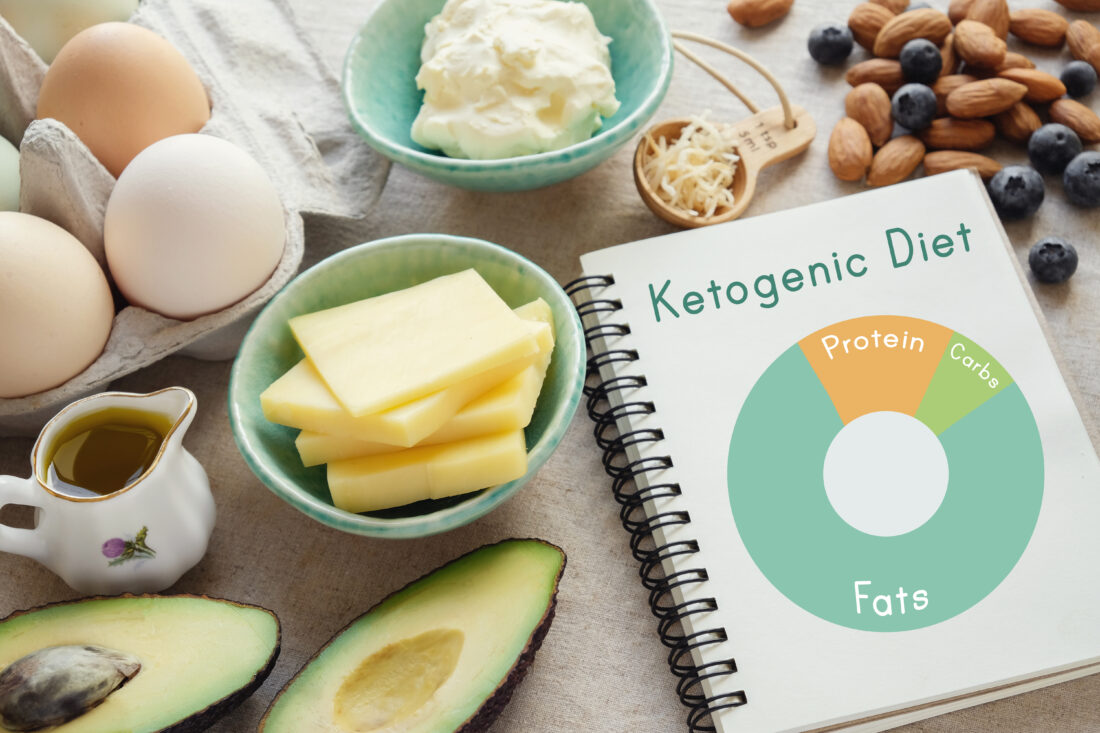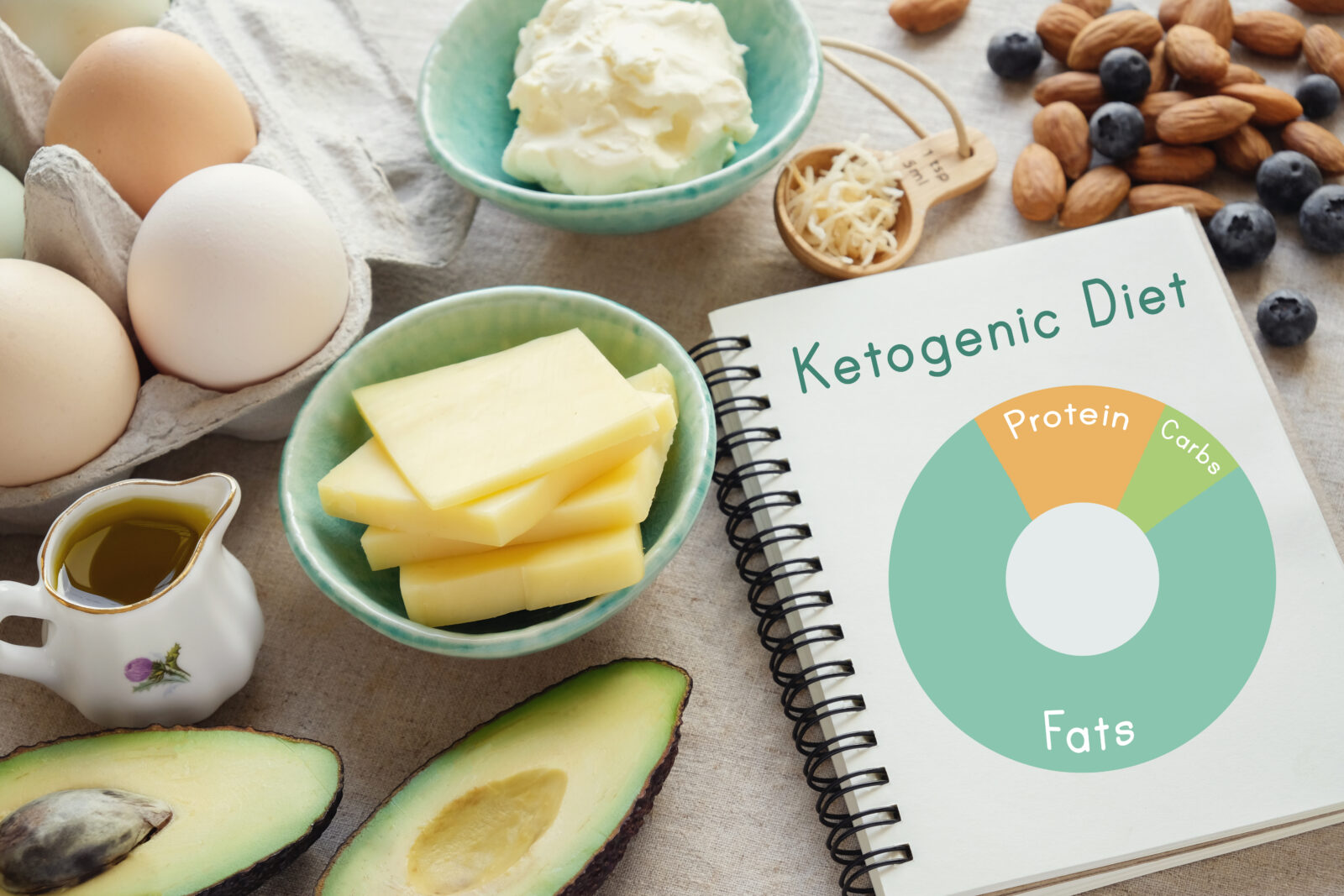The ketogenic diet or keto diet is a low-carbohydrate, moderate protein and high-fat diet that involves drastically reducing carbohydrate intake and replacing it with fat. This reduction in carbs puts your body into a metabolic state called ketosis as your body then starts using fat as its energy source rather than glucose, which is released by carbohydrates. The body becomes efficient at burning fat for energy. It also turns fat into ketones in the liver, which can supply energy for the brain. This enables your body to tap into your excess fat reserves for energy which results in weight loss.
The ketogenic diet, which was initially used as one of the tools to treat epilepsy and other neurological problems, is also known for reducing blood sugar and insulin levels. This makes the diet diabetic friendly and prevents you from ‘crashing and burning’ after you eat a carb-heavy meal. You get the sustained amount of energy all day instead of experiencing a ‘high and a low’. Studies have now shown that the diet, can also have benefits in treating Alzheimer’s, cancer (to slow tumours growth), diabetes, heart disease, autism, pcod, hypothyroidism and hyperthyroidism amongst many other health conditions.
The keto diet is all about eating good sources of protein, good fat and whole foods like nuts and vegetables. It is not a diet of just bacon and steak. It can be made into a nutrient-rich diet which can be very beneficial and easy to follow. You need to drink adequate water while on this diet (at least 3 litres a day); supplement with potassium; and eat enough salt.
The ketogenic diet is very restrictive and needs to be followed under the guidance of an experienced dietician or a medical practitioner.
Food to eat on a ketogenic diet:
- Meat: Red meat, pork, sausage, bacon, chicken and turkey.
- Fatty fish: Salmon, trout, tuna and mackerel.
- Eggs: Pastured or omega-3 whole eggs.
- Butter and cream: Grass-fed when possible.
- Cheese: Unprocessed cheese (cheddar, goat, cream, blue or mozzarella).
- Nuts and seeds: Almonds, walnuts, flax seeds, pumpkin seeds, chia seeds, etc.
- Healthy oils: Primarily extra virgin olive oil, coconut oil and avocado oil.
- Avocado: Whole avocados or freshly made guacamole.
- Low-carb veggies: Most green vegetables, tomatoes, onions, peppers, etc.
- Condiments: Salt, pepper and various healthy herbs and spices.
Foods to Avoid – Any food that is high in net carbohydrates should not be eaten, such as:
- Sugary foods: Soda, fruit juice, smoothies, cake, ice cream, candy, etc.
- Grains or starches: Wheat-based products, rice, pasta, cereal, etc.
- Fruit: All fruit, except small portions of berries.
- Beans or legumes: Peas, kidney beans, lentils, chickpeas, etc.
- Root vegetables and tubers: Potatoes, sweet potatoes, carrots, parsnips, etc.
- Low-fat or diet products: These are highly processed and often high in carbs.
- Some condiments or sauces: These often contain sugar and unhealthy fat.
- Unhealthy fats: Limit your intake of processed vegetable oils, mayonnaise, etc.
- Alcohol: Due to their carb content, many alcoholic beverages can throw you out of ketosis. Only white spirits and dry wines are allowed, which are very low net carbs such as vodka or gin.
- Sugar-free diet foods: These are often high in sugar alcohols, which can affect ketone levels in some cases. These foods also tend to be highly processed.
There are many apps that can enable you to track your net carbohydrate intake, and help you to calculate your net carbs, which should not exceed more than 40 grams in a day.
The ketogenic diet shares many similarities with the first phase of the Atkins diet, but remember that there is more emphasis on fat on a ketogenic diet than protein. It’s very easy to overeat protein on a low carb diet such a keto. So, make sure you add adequate good fat with every meal. For, e.g. If you’re having a chicken salad, make sure you add a good quality of whole egg mayonnaise and olives. If you’re eating eggs, you can use good quality butter or good quality olive oil for cooking them.
It is also essential to make sure you use organic and high-quality ingredients while making a ketogenic meal for yourself.
Again, I would like to stress on the fact that the ketogenic diet while being very beneficial, needs to be monitored and be done under the guidance of a practised dietician or a medical practitioner.

Read other article by Shivangini
Share
Picture Credit : Shutterstock


Thank you so much for explaining the Keto Diet in a simple and effective way.